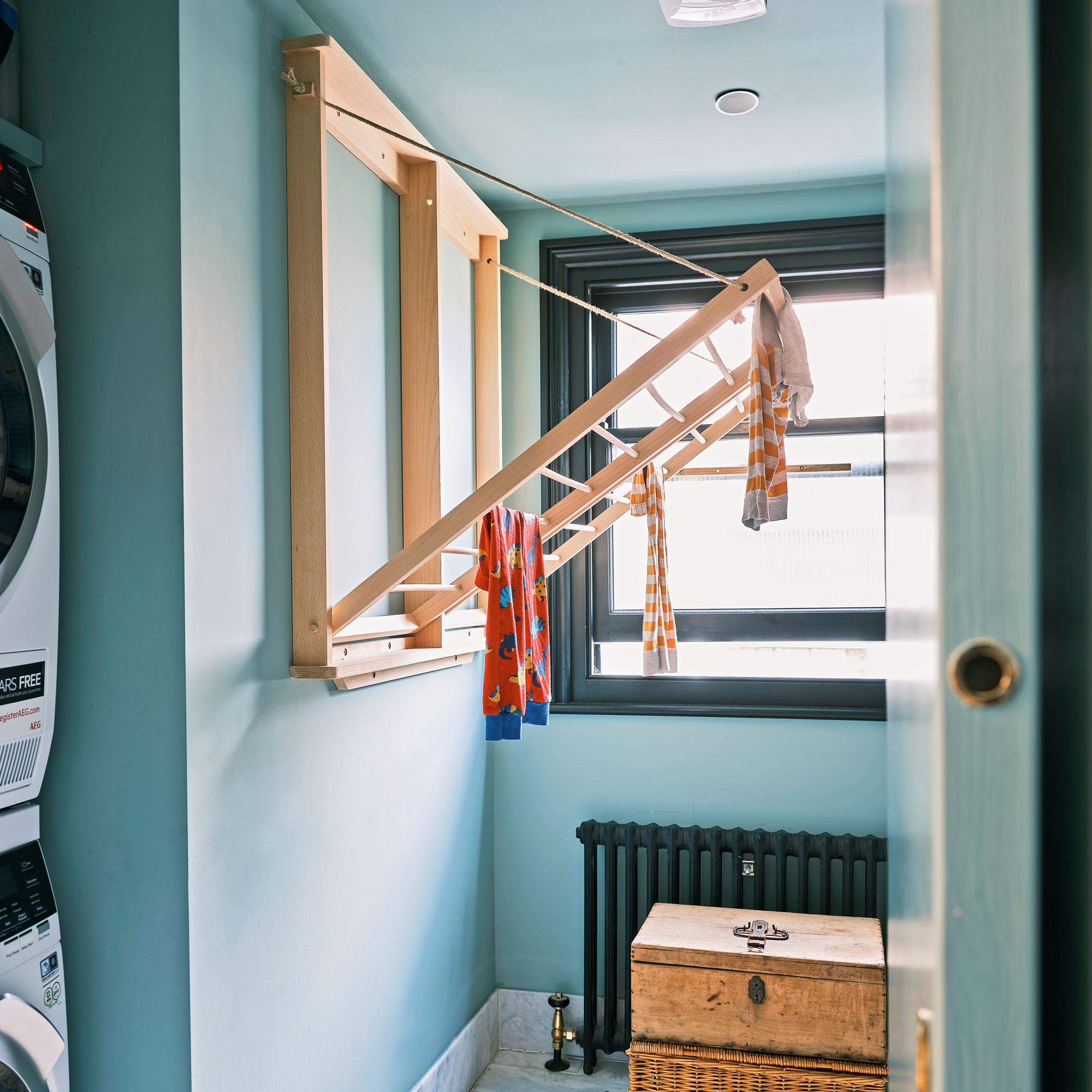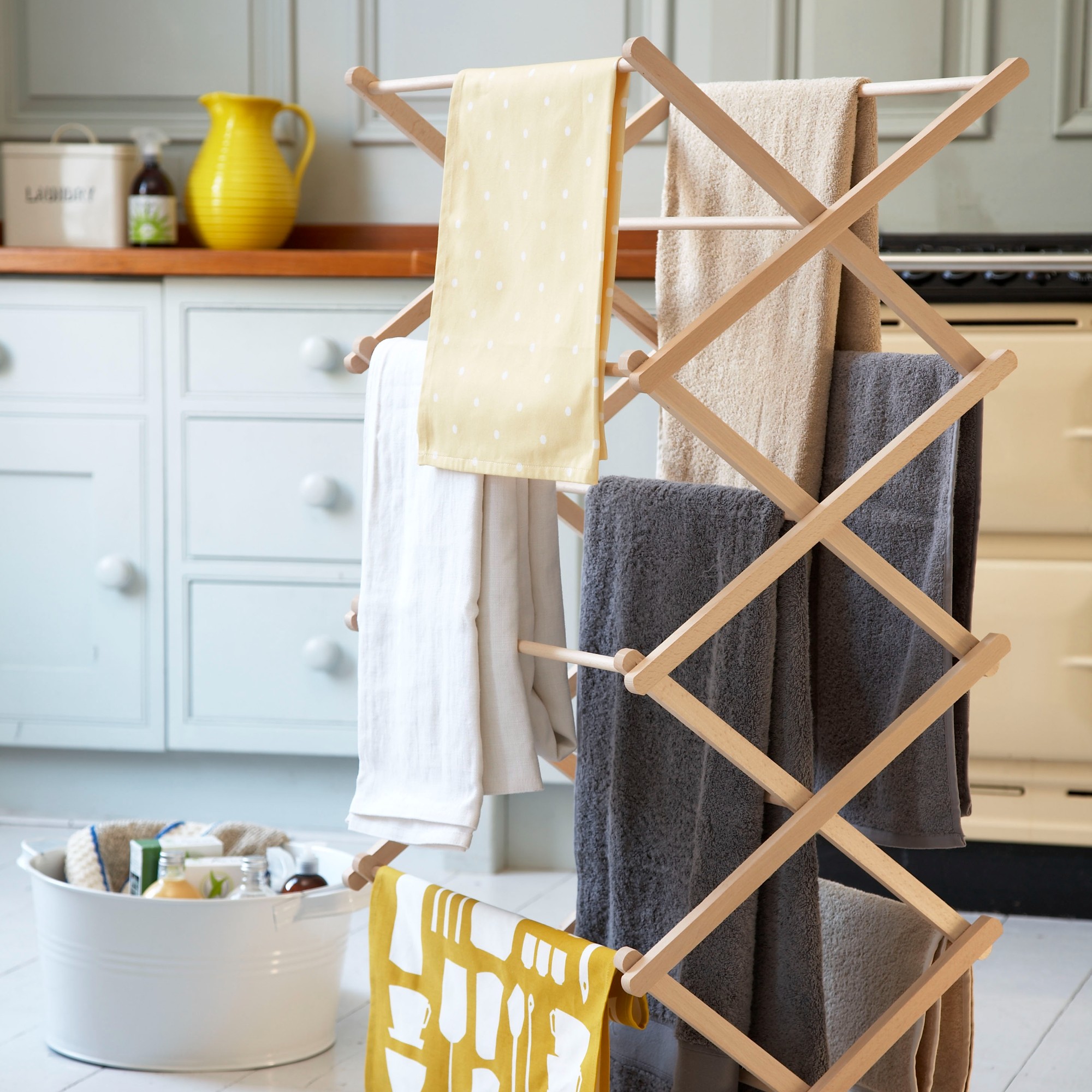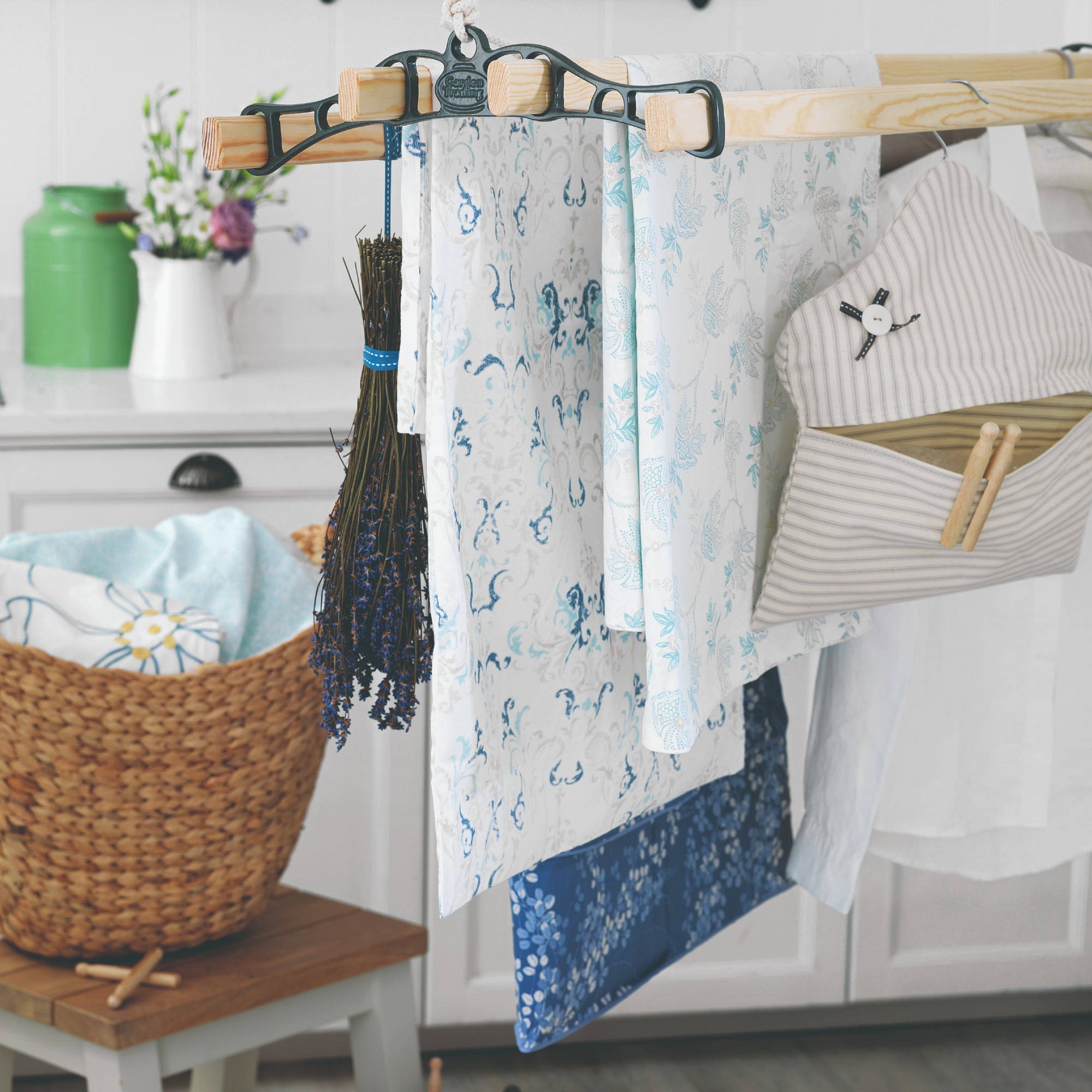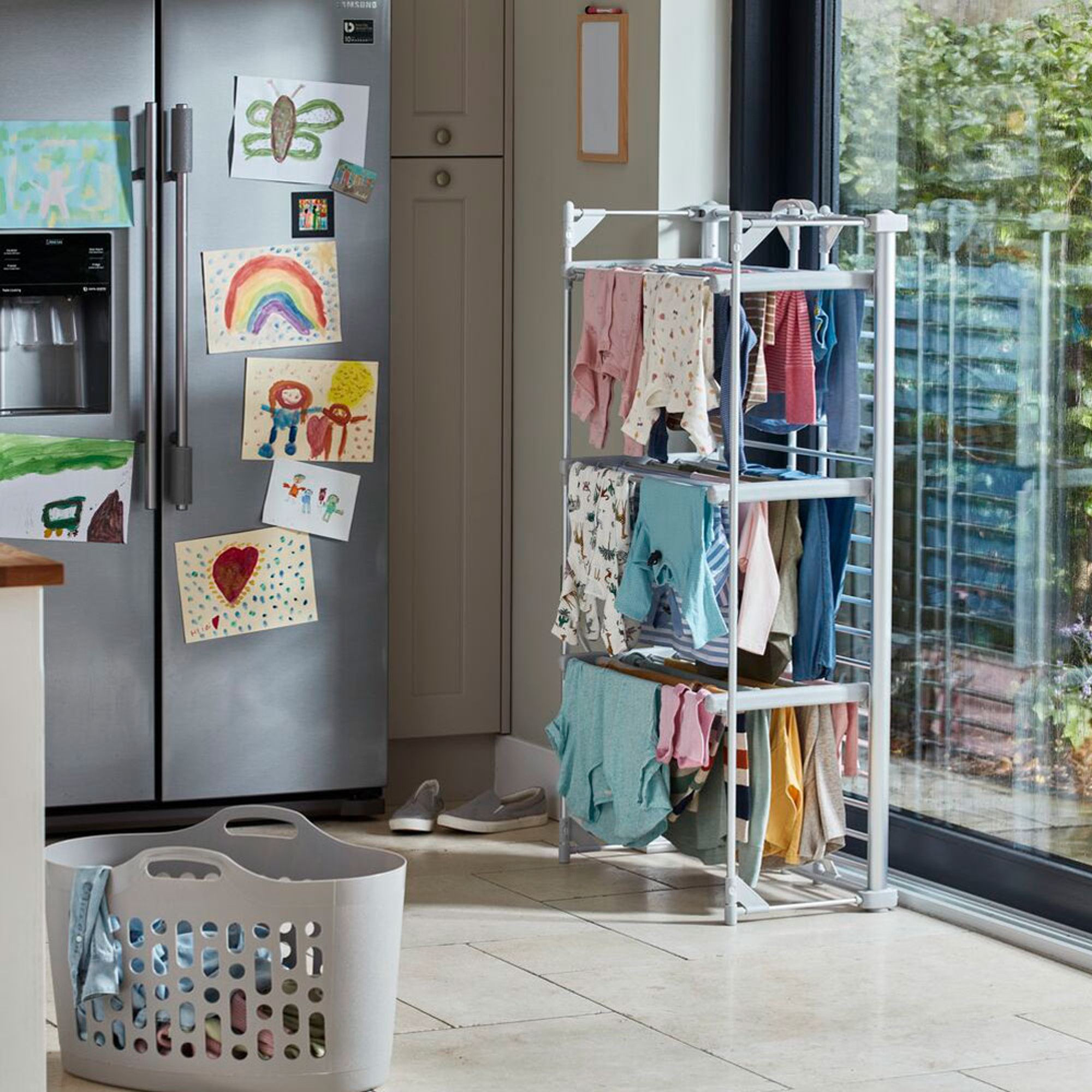
Everything gets a little more difficult in the winter. With chillier temperatures and limited daylight hours, completing certain household chores can often feel impossible. And if you’re already mourning the loss of summer washing on the clothes line, you might be wondering how to dry clothes in winter.
We all want to dry our clothes fast, but anyone who has ever tried to dry clothes in winter knows it can often take days to dry wet clothes when its cold and wet outside. Of course, if you have a large family and need a quick turnaround of fresh clothes, you can’t wait days for your children’s school uniform to stop feeling damp. So, you need to know how to dry clothes in winter… and you need to know how to dry them fast.
As Gwilym Snook, laundry expert at AO.com, says, ‘Drying your clothes as the weather turns for the worse is easy provided you take the right steps.’ Below, we’ve compiled a list of those steps to help you dry clothes in winter without the extra hassle so you can have dry clothes no matter the weather.
1. Place a dehumidifier next to your drying rack

We already know that the best dehumidifiers can get rid of damp in a house, but many people fail to realise just how useful dehumidifiers can be when trying to dry clothes in the winter - especially if you choose one with a dedicated laundry mode.
Ethan Hynes, a textile expert at You Comfort, explains, ‘A dehumidifier in the room will reduce the drying time of garments considerably. Indeed, balancing humidity is key: it helps not only the clothes dry faster but also prevents any musty odours and mould from forming.’
And while dehumidifiers can dry clothes, there’s no point in spending your hard-earned money on this appliance if you’re not going to choose the right size dehumidifier for the job or use it correctly.
Chris Michael, Managing Director of Meaco, advises, ‘Place a drying rack away from walls to prevent the moisture from being trapped. Many dehumidifiers also require a 30cm gap behind the machine to ensure it can pull in the air effectively.’
He also states that the way you position your clothes near the dehumidifier affects how they dry in winter, too. He states, ‘Hang items individually and with as much space in between them as possible so they will dry more quickly. Put smaller clothes on the bottom of a clothes horse/rack and large ones at the top, using coat hangers where possible to spread clothes out. All the clothes should be exposed to the air to help them dry.’
2. Make the most of warm spots

There’s a high chance that you do everything you can to keep your home warm in winter. So, it’s worth taking advantage of these warm spots while trying to dry clothes in winter.
Deyan Dimitrov, CEO and Co-Founder at Laundryheap, says, ‘After taking your clothes out of the washing machine, be sure to hang them in front of any entrances with good airflow, or warmer spots in your home (including radiators, windows and doors). Regardless of whether these locations have hot or cold air, this method will speed up the drying process by allowing fresh air to circulate around the room whilst your clothes dry.’
Of course, you should always avoid hanging clothes on a radiator unless you have a radiator airer, so you can also place your clothes airer in a sun trap in your house. You may have to move it periodically to follow the sun, but this will make a big difference.
3. Invest in a heated clothes airer

Although it may seem like a hefty investment, a heated clothes airer can change the washing game during the winter months. Coming in various forms - from traditional-looking drying racks to drying pods - these heated clothes airers can help you dry your clothes in winter in no time.
Lynsey Crombie, AKA Lynsey Queen of Clean, says, ‘Electric clothes driers are a great alternative to the tumble dryer. They are energy-efficient, simple, and easy to assemble. The heated, thermostatically controlled, lightweight aluminium frames will dry your laundry gently - perfect for delicates like satin and silk.’
Personally, I wouldn’t be without my heated clothes airer now. But you need to know how to get the most out of your heated clothes airer to avoid making any heated clothes airer mistakes.
Of course, they aren’t free, so you need to be aware of how much it costs to run a heated airer before buying one. Generally, they won’t cost you more than 10p an hour.
4. Aim to hang wet clothes immediately

When you have no option but to dry your clothes indoors over winter, they may start to smell a little… off. And while there are many ways to stop clothes from smelling musty when drying indoors, hanging them immediately is your best bet.
Yes, leaving your clothes in the washing machine after the cycle has finished can make them smell and feel damp, and this could even lead to mould growth. So, you should aim to hang your wet clothes as soon as possible. And if you want to add another step into the mix, you could also run your washing machine for a little longer.
Gwilym says, ‘When your clothes have finished their cycle, why not try to use an extra spin cycle to remove as much water as possible? Pop this on when your washing is done to help speed up your clothes drying time this winter.’
If you’re struggling with where to hang your clothes, though, Lynsey says, ‘One of my favourite drying tricks is to hang clothes on coat hangers and then hang them on the curtain rail with the window ajar or on the bathroom shower rail. You will be so surprised at how quickly clothes can dry like this.’
5. Utilise radiator space wisely

While you may be inclined to layer your clothes on top of your radiators during the winter, this isn't advised. In fact, most experts agree that you should only hang clothes on a radiator if you have a radiator airer.
As Stephen Hankinson, a heating specialist at Electric Radiators Direct, explains, ‘Covering your radiators with towels, clothes or other items will reduce the radiators’ performance and may cause a fire hazard.’
But you can still take advantage of the heat from your radiators to dry your clothes in winter if you're smart about it.
Lynsey says, 'Opt for radiator airers and you will find the clothes crease less too, so much easier to iron. These radiator airers are easily attached to a radiator, and because of the robust arms that keep your clothing safe when they dry, they will remain firmly in place.'
Many of them also fold down for ease of storage, so are perfect for those who have
This radiator airer folds out when you need it, and has adjustable arms to fit any radiator. All in all, it can hold 4.5kg of washing.
This four-bar radiator airer is the ideal solution for the colder months, and won't negatively impact your energy bills. It even has non-scratch end caps and rubber tips to protect your radiator.
This airer has a maximum weight load of 4kg, and will neatly fold away when you're not using it. So, it won't take up any extra space.
6. Use a tumble dryer

If you’re lucky enough to have a tumble dryer, winter is the prime time to use it to your advantage. Of course, many people are conscious of the cost to run a tumble dryer - especially in the winter when energy bills skyrocket - but there are ways to use a tumble dryer without spending a fortune in the process.
Jessica Rhodes, Product & Marketing Manager at ASKO, says, ‘As the colder months set in, drying your clothes can become challenging. I’d recommend using an energy efficient tumble dryer which features moisture sensors, as these sensors can detect when clothes are dry, preventing over-drying whilst helping you save energy.’
She also notes that this technology ‘prevents unnecessary over-drying as well as wear and tear on your clothes.’ So, it’s a win-win situation.
FAQs
Should you open windows when drying clothes?
Yes, you should. Constant air circulation is key to drying clothes - no matter whether you’re drying them in the summer or winter. So, by opening your windows, you can ensure the air is circulating enough to remove the moist air and bring in fresh air.
This is especially important during the winter months, as a build-up of moist air from your wet clothes can potentially get trapped and lead to damp and mould growth.
You don’t have to open all of your windows extra wide, though. Just a crack will do.
Will washing dry outside in winter?
Potentially, yes! Another great way to dry clothes in winter is to take advantage of a dry, sunny day. Although it may take longer to dry than in the summer, washing can still dry outside when the temperatures are low.
However, always watch your washing if you dry it outside during the colder months. Don’t put it out too early in the morning or keep it out too late in the afternoon, as you may find that your clothes become damp. Check it periodically to see how well it’s drying.
Just be aware that your clothes may feel a little damp after being out all day in the winter. In most cases, this feeling will go away as soon as you take them indoors. If they continue to feel damp, however, you’ll need to continue drying them inside.
How will you be drying your clothes this winter?







